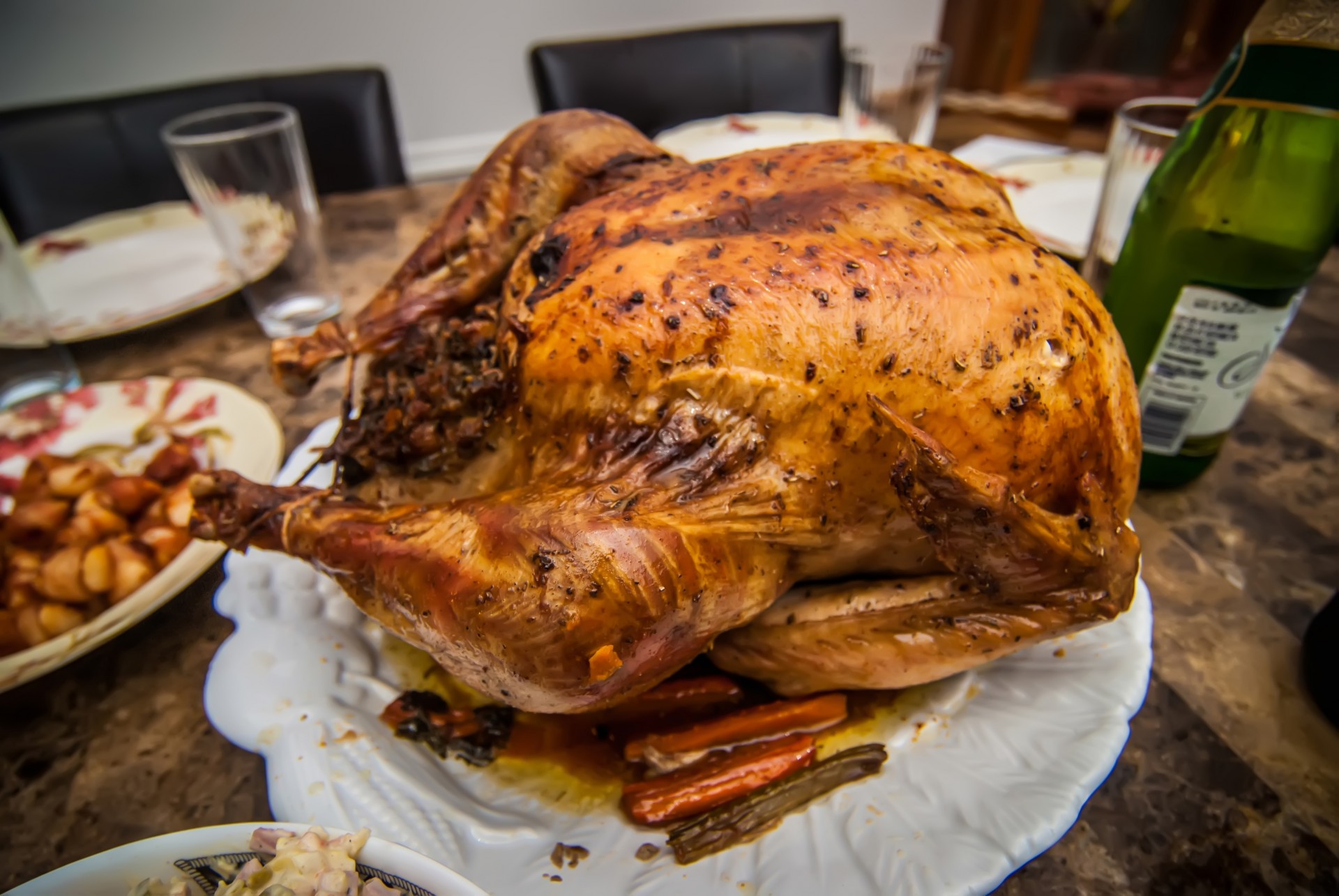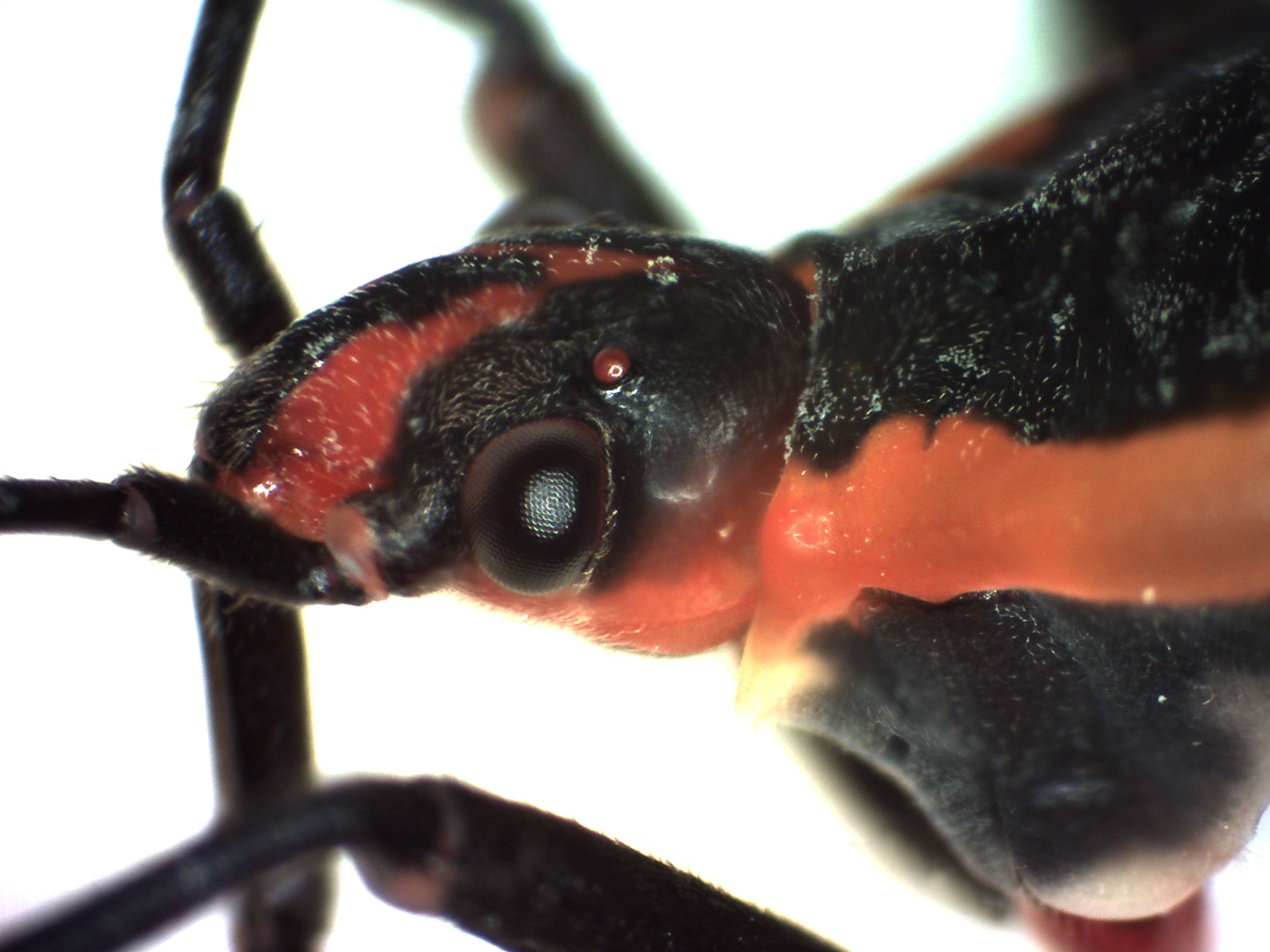‘Tis the season for many Americans to gather around feasts of plenty featuring succulent and meaty main dishes. These meals are often part of a religious observance, but can also be secular (as a famous Seinfeld episode points out). Perhaps, however, we should consider a tantalizing question: will we ever see a similar tradition featuring grubs and bug meat?

Now, this may seem like a gross and unnecessary contemplation, but the practice of people eating bugs (entomophagy) is nothing new. In fact, humans have been eating insects since our earliest beginnings as a species (2). What began as an insectivorous diet only later grew to incorporate other food items like fruits, vegetables and other animal meats. Entomophagy is still broadly practiced today in over 100 countries, mostly spanning Africa, Asia and Latin America. Within these countries, over 2,000 species of insects are eaten by about 3,000 different ethnic groups (3). That’s a lot of bugs being eaten!

Part of the reason these traditional practices of entomophagy have stuck around so long is due to the nutritionally dense nature of insects, as well as their tastiness and ready availability. Insects contain a wealth of proteins, carbohydrates, minerals, fats and vitamins, and relative amount of each nutrient varies with species. They can also be found in virtually every habitat on earth and often in high densities. The United Nations has even suggested eating these critters as way to combat nutrient deficiencies in some of the least wealthy countries (3).
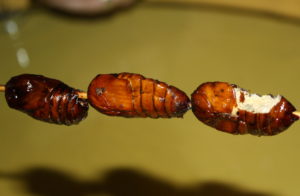
Silkworm pupae are a prized treat in parts of Asia and are a by-product of the silk industry. (image by Steven G. Johnson, CC BY-SA 3.0)
Many of the arguments for dining on more varied arthropods than crustaceans stem from their potential good for the environment. Unlike cattle and other livestock, insects are an incredibly efficient food source. They offer a high amount of edible product for the food they consume (high energy conversion), which means that 10 times less plant material is needed to produce a kilogram of bug meat than a kilogram of beef (4)! Additionally, since insects are small, less land would need to be diverted to large-scale insect farming operations compared to the wide-scale deforestation associated with beef production and cattle ranching (5). These are just some of the potential benefits that insects can provide.
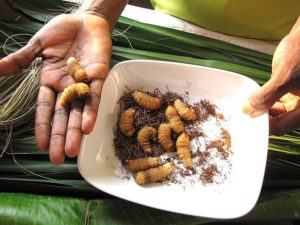
So why do some people have a hard time swallowing the possibility of eating insects? Part of this rejection of entomophagy comes from a common association of insects with household pests. If a fly falls into your wine glass, would you rather pick the fly out and keep drinking or toss the whole glass? Unfortunately, in the case of many of our household products, we don’t really have a choice. The FDA’s Defect Level Handbook indicates that consumers may be ingesting more parts of insects (and other things) than the average person would imagine. In the case of chocolate, 60 insect parts per 100 grams (which adds up to about two bars) still fall within permissible levels (6). Meaning that the next chocolate bar you consume may be fortified with a bit more protein than you would initially expect. That is to say that we already eat some insects, so why not do so of your own volition?

In fact, large-scale changes to how people think about food aren’t uncommon. While eating raw fish may have been virtually unheard of in the US many years ago, the popularity of sushi has only increased. Often foods can become overnight crazes, such as the case with quinoa and acai (1). Several high-end restaurants already feature insect treats on their menu, and cheaper eats can be had via food trucks in major cities like San Francisco.
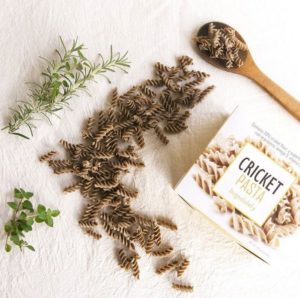
Will westerners embrace the call to a more sustainable protein source? Probably not anytime soon. But in the meantime, small companies continue to make products aimed at chipping away at the widespread feelings of disgust that certain insects can conjure. For the curious and adventurous eaters, here is a few food products and where to find them:
-Cricket based protein powder: Crik
-Chocolate covered crickets and spicy mealworms: Don Bugito
-Cricket flour enriched pasta: Bugsolutely
References:
- Shelomi, M. Why we still don’t eat insects: Assessing entomophagy promotion through a diffusion of innovations framework. Trends in Food Science & Technology 45, 311–318 (2015).
- Sponheimer, M., de Ruiter, D., Lee-Thorp, J. & Späth, A. Sr/Ca and early hominin diets revisited: new data from modern and fossil tooth enamel. Journal of Human Evolution 48, 147–156 (2005).
- van Huis A, V. I. J., H. Klunder, E.Mertens, A. Halloran, G. Muir, and P.Vantomme. 2013. Edible insects: Future prospects for food and feed security. FAO Forestry Paper171:1–186.
- Premalatha, M., Abbasi, T., Abbasi, T. & Abbasi, S. A. Energy-efficient food production to reduce global warming and ecodegradation: The use of edible insects. Renewable and Sustainable Energy Reviews 15, 4357–4360 (2011).
- Bowman, M. S. et al. Persistence of cattle ranching in the Brazilian Amazon: A spatial analysis of the rationale for beef production. Land Use Policy 29, 558–568 (2012).
- FDA. Guidance Documents & Regulatory Information by Topic – Defect Levels Handbook. Available at: https://www.fda.gov/food/guidanceregulation/guidancedocumentsregulatoryinformation/ucm056174.htm. (

